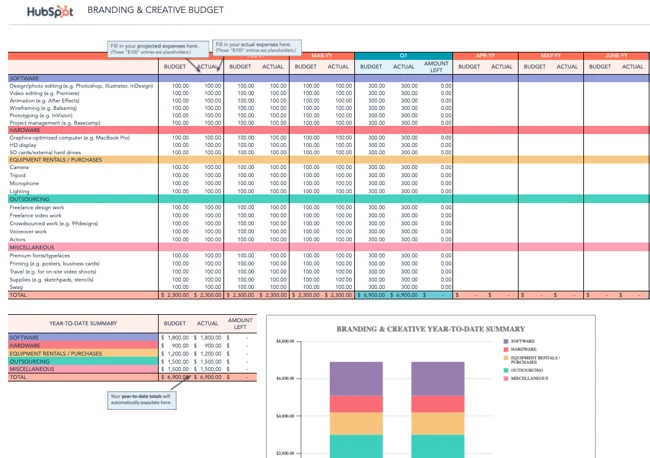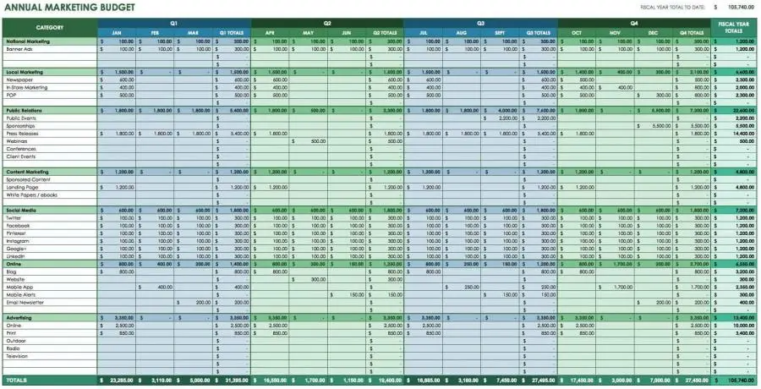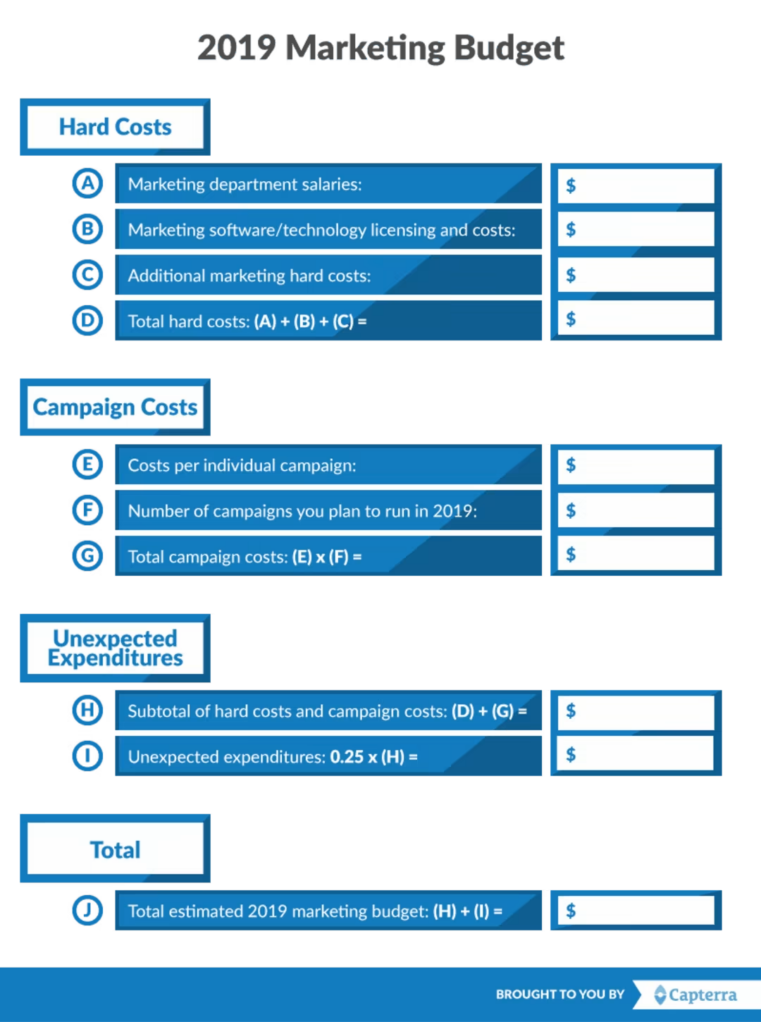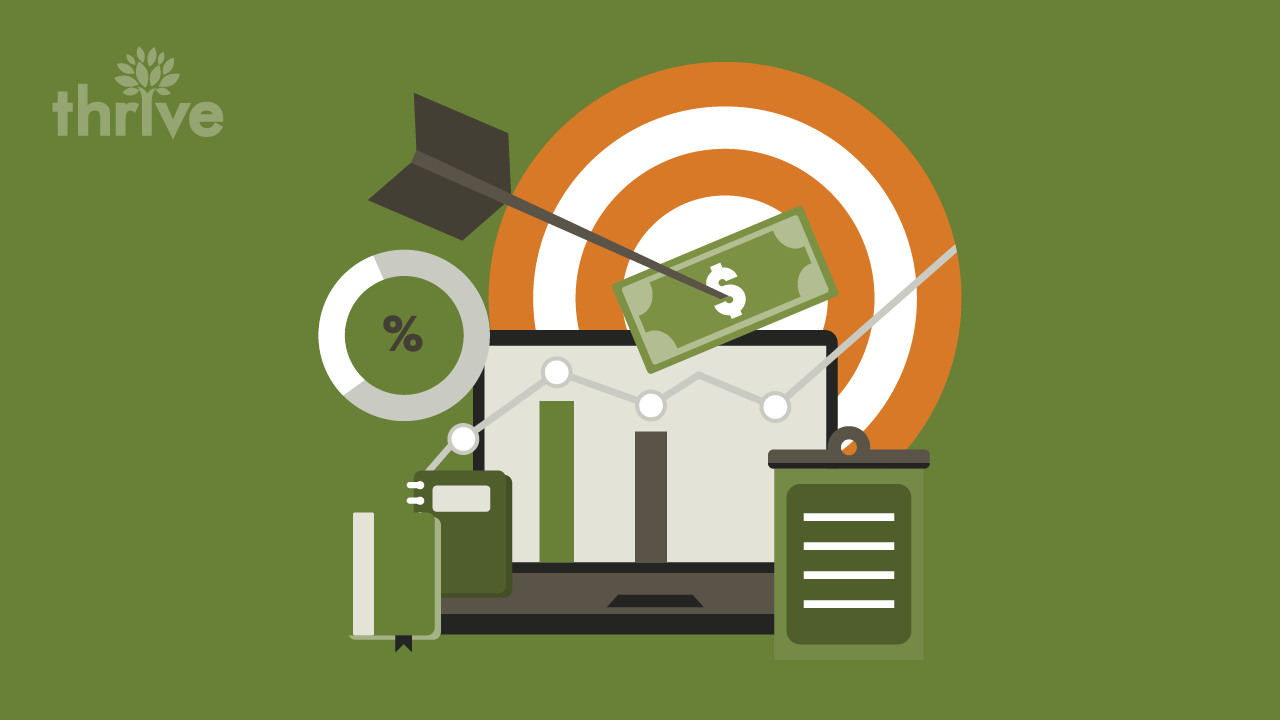Every small business owner knows the feeling of dread that comes with creating a marketing budget.
It’s like walking a tightrope between going big enough to make an impact and staying within your means. When it comes down to it, every dollar counts – but where do you begin?
For many businesses, understanding their digital marketing plan is daunting. The ever-changing landscape of digital trends can be overwhelming for any marketer, especially when there’s pressure from management or investors to succeed quickly and cost-effectively.
How can one plan strategically without breaking the bank?
This post explores how small businesses can create and manage a successful digital marketing budget in 2023, what to focus on and how to ensure they maximize their return on investment (ROI).
Why You Need a Marketing Budget Plan
Let’s get this out of the way first: why should you have a budget for digital marketing? After all, small businesses often have limited resources, and the bottom line is always a priority. Also, keeping up with operational expenses and other expenditures (such as payroll) can be challenging enough, so why add another expense?
The truth is digital marketing has become a key component of success in the modern business landscape. You can no longer solely rely on traditional marketing methods like print ads or radio spots.
For small businesses, a marketing budget plan tremendously helps them streamline financial management.
Adam Draper, Thrive’s Digital Marketing Manager for Strategy, laid down some of its most compelling benefits.
Allows for Better Planning and Forecasting
Small businesses don’t have the luxury of a large marketing team or the resources to conduct exhaustive market research and strategy. Draper pointed out that ensuring ROI is especially important for small businesses.
“It’s crucial that the money invested in marketing contributes effectively to the business and helps generate revenue,” said Draper.
With an established budget, you can focus your efforts and make strategic decisions that help you reach your goals.
Enables Efficient Management of Marketing Activities
Since everything is planned in advance, you can closely monitor and measure each activity.
Draper explained that your budget plan “helps determine the value of a conversion and the amount you’re willing to spend to get one.” Understanding these values helps you identify “how much you need to spend,” and which campaigns are working, needs adjustment or are scrapped.
Creates a Sense of Control and Responsibility
A budget plan creates accountability among all stakeholders, from the marketing team to management and investors.
You can do this by identifying “what needs to be tracked, enabling the creation of targeted and measurable marketing campaigns,” Draper said.
All this data gives you more control over your marketing efforts and paves for better-informed decisions when adjusting your budget.
Encourages Data-Driven Decision-Making
A marketing budget for small business lets you make decisions based on data rather than a gut feeling.
Are you allocating the budget correctly? Are you hitting your targets? Where can you find more growth opportunities? A data-driven approach to budgeting helps you answer these questions.
Supports Scalability and Growth
Every small business has to start somewhere, and a marketing budget plan can help you lay the foundation for future growth. An established budget helps you make educated investments in the future.
“A budget plan allows for dynamic marketing efforts that can adapt to your success, seasonal changes and competitor activities,” said Draper.
Essentially, your plan makes your finances flexible enough to remain effective and work with the ever-changing landscape.
How To Allocate Budget for Digital Marketing
Creating your marketing budget plan is never an easy task. And when you look at some tutorials online, you may be overwhelmed by the sheer amount of details you must consider.
To spare you the hassle, Draper provides a quick walkthrough of what goes into building an effective digital marketing budget plan this 2023.
Step 1: Establish Your Goals
Marketing budget templates don’t start with numbers – it starts with goals. And Draper says you have to be specific.
What are your priorities and objectives? Which metrics will you use to measure success? Answering these questions helps you develop a clear set of goals and objectives.
Here are some goals you might want to set for your team this 2023:
• Increase brand visibility and reach.
• Generate more leads.
• Improve customer engagement.
• Grow sales revenue.
You can crystallize your goal by going back to the SMART formula – Specific, Measurable, Achievable, Relevant and Time-Bound.
A good goal using this framework may look like this: “To increase sales revenue by 20% in the next six months.”
Step 2: Understand Your Marketing Costs
Your marketing costs are the expense items you’ll need to cover to achieve your goals. This could include any costs related to marketing, such as
• Paid advertising
• Freelance contracts
• Marketing automation software
• Outsourcing digital marketing services
• New hires
• Content creation costs
A good rule of thumb is listing all the possible expenses you expect to incur throughout the year. Once you have a comprehensive list, you can assign a budget for each item.
Step 3: Identify Your Marketing Activities
Unlike marketing costs, activities refer to the actual work needed to reach your objectives. These activities would include
• Search engine marketing.
• Creating blog content.
• Promoting on social media.
• Building an email list.
Do these activities have a separate cost assigned to them? Are these expenses separately identifiable from other marketing costs? While this can be difficult to track, clearly understanding what activities your team is focusing on helps you allocate resources correctly.
Step 4: Estimate Your Budget
This is the good part.
Once you’ve identified your goals, costs and activities, it’s time to create an estimated budget in marketing plan.
This involves crunching the numbers and coming up with a tangible amount you’ll need to spend on marketing this 2023. The key here is to ensure that your numbers are realistic – don’t overestimate or underestimate the actual costs you’ll incur.
Your estimated budget should be informed by your past income and expenses. We call this the historical budget – it helps you better understand what you can afford for 2023 marketing.
Draper recommends an average marketing budget for small business of 5 to 10% of your revenue. However, this is “contingent on variables like industry, target market, competitive landscape and growth objectives.”
For example, the average marketing budget for small business in highly competitive industries “may necessitate a higher percentage of revenue dedicated to marketing to stand out and capture market share,” Draper said.
Ultimately, as Draper points out, a strategic assessment of these three factors contributes to how you determine your marketing budget plan:
• Strategic goals
• Market conditions
• Expected returns from marketing investments
Step 5: Measure Performance and Optimize
Your marketing budget plan is not set in stone. As the year progresses, you may find that your budget needs to be adjusted or reallocated to reach your objectives.
This is why monitoring and measuring performance throughout the year is crucial. Are you on track? If not, what can you do to improve?
Here are some metrics to help you answer these questions:
• Cost per Lead (CPL): Measures the cost of generating leads and customer conversions.
• Cost per Acquisition (CPA): Tracks how much it costs to acquire a paying customer or subscriber.
• Return on Investment (ROI): Determines the profitability of your marketing activities.
• Conversion rate: Calculates the percentage of visitors completing a particular action (such as purchasing).
Draper said that tracking and analyzing key metrics optimizes your budget in marketing plan as needed and ensures that your team is making the most out of their resources. He also notes that “immediate ROI may not always be feasible, particularly for certain business types.”
“As campaigns mature and become more optimized, achieving a positive ROI should be the target,” Draper explained.
Sample Marketing Budget Templates You Can Use
Reinventing the wheel for your budget in marketing plan every year can be a bit daunting. To make things easier, try out one of the many marketing budget templates that are available online.
Here are three sample marketing budget templates that we think would fit your needs:
Branding and Creative Budget From HubSpot
Most of your marketing involves creating high-quality branding assets, such as videos, infographics and images. Don’t underestimate this part of your marketing, though, because a lot of moving pieces need to be put into place.

Image from HubSpot
What we like about this template is that it also lets you see your storage costs alongside other creative marketing spend, like:
• Software subscriptions
• Outsourcing expenses
• Equipment rentals
HubSpot’s example of marketing budget plan is also uber-visual, which is always a good thing in any spreadsheet.
Annual Marketing Budget From Smartsheet
Smartsheet’s example of marketing budget plan is more straightforward. It offers the standard layout for a digital marketing plan with rows and columns for several types of costs. It’s also very comprehensive. You’ll be able to see your marketing spend across several categories, including:
• Market research
• Lead generation
• Events
• Branding
• Sales support

Image from Smartsheet
If you need an extensive marketing budget plan that lets you see your monthly, quarterly and yearly marketing spend, then this template is for you.
2019 Marketing Template From Capterra
We know what you’re thinking. This is from 2019, so why bother using Capterra’s marketing budget templates? Well, you’ll soon realize that this template’s simplicity is what makes it so powerful.
It’s a simple sheet that lets you figure out how to allocate budget for digital marketing, segmented into three categories
• Hard costs. These are expenditures that go to your tangible assets.
• Campaign costs. These are marketing costs dedicated to your marketing initiatives.
• Unexpected expenditures. Capterra defines this cost as 25% of your hard and campaign costs’ total value.

Image from Capterra
Capterra’s example of marketing budget is perfect for newbies who want to start getting a foothold on creating a marketing budget for small business.
Optimize Your Digital Marketing Today With Thrive
And, there you have it! A quick and easy guide to creating your 2023 digital marketing plan that works. It’s not fancy, but it gets the job done. With the right tools and strategies, you can set yourself up for an exceptional 2023, so go ahead and start planning today!
And if you ever need help, we are here. Thrive Internet Marketing Agency is a full-service marketing agency.
Our experts design tailored and cost-effective digital marketing services that deliver results. From email marketing to SEO and website design, our team has the skills and experience to help you succeed in the digital space.
Contact us today and get your business on the right track.








